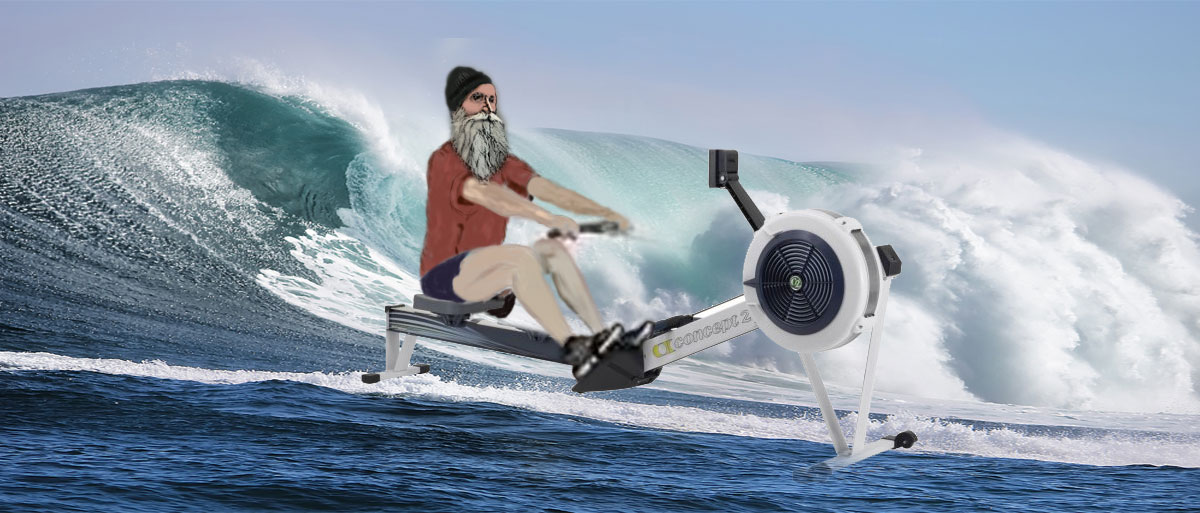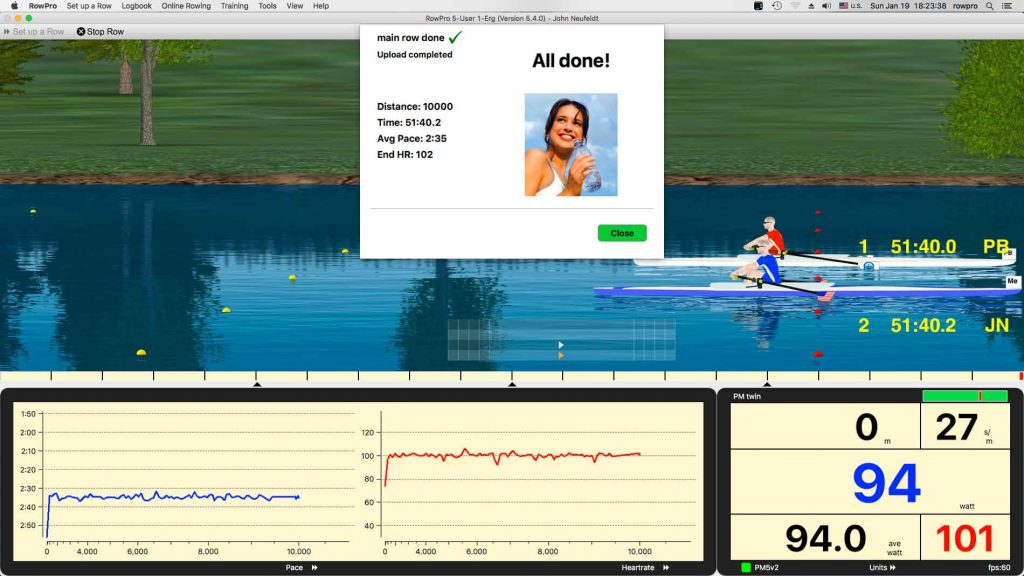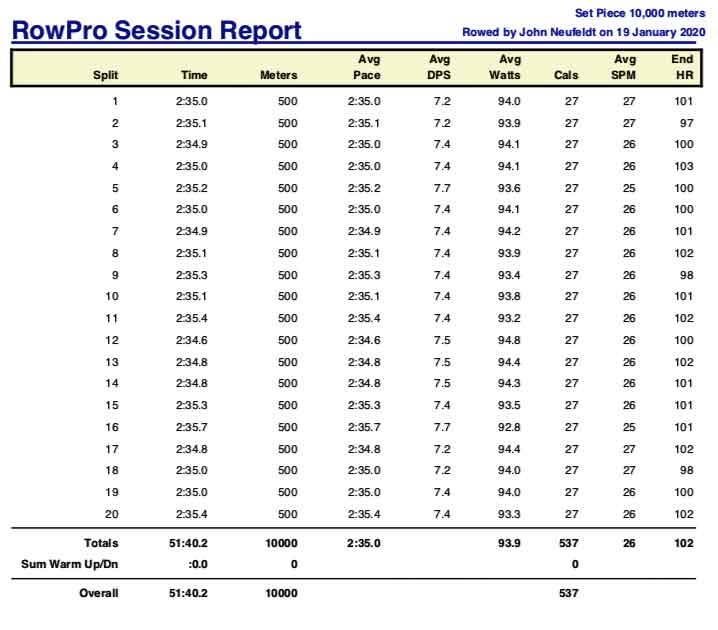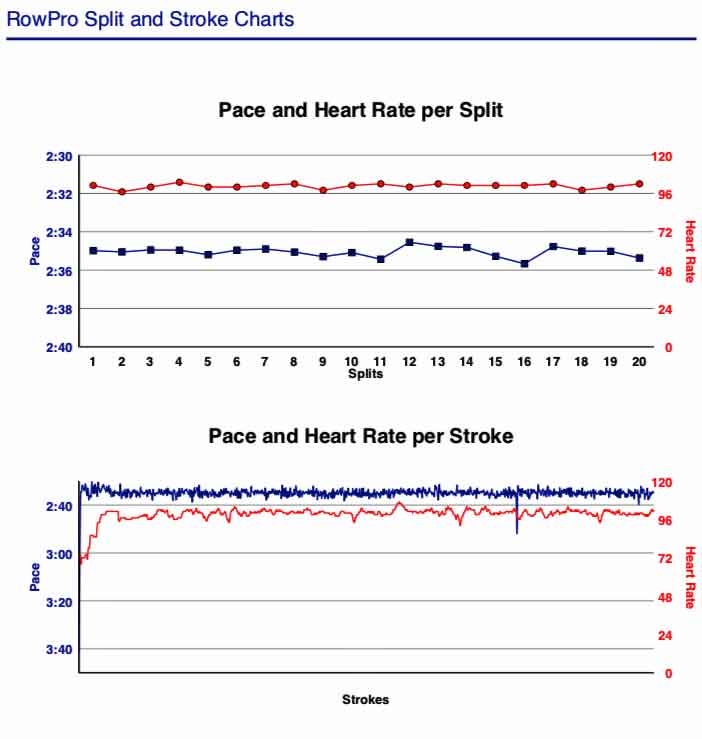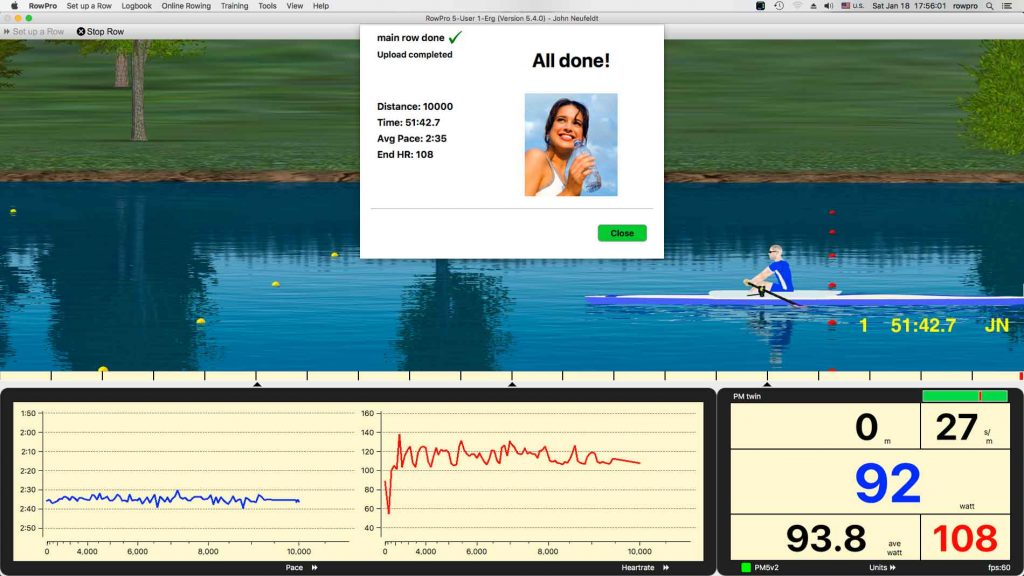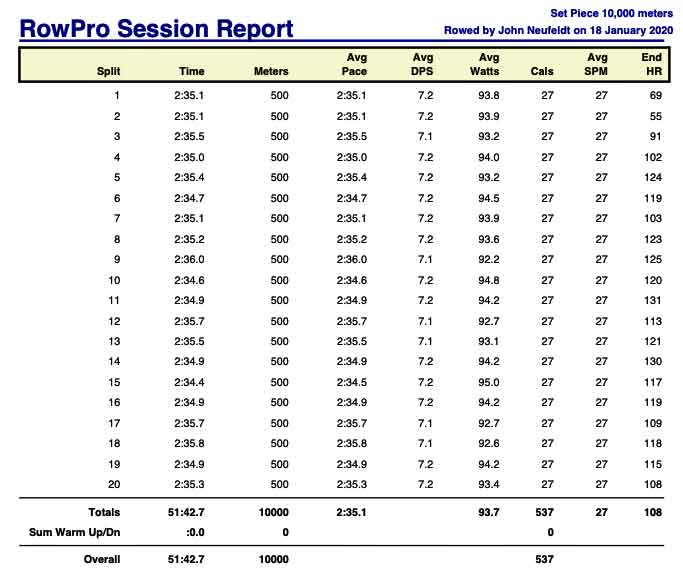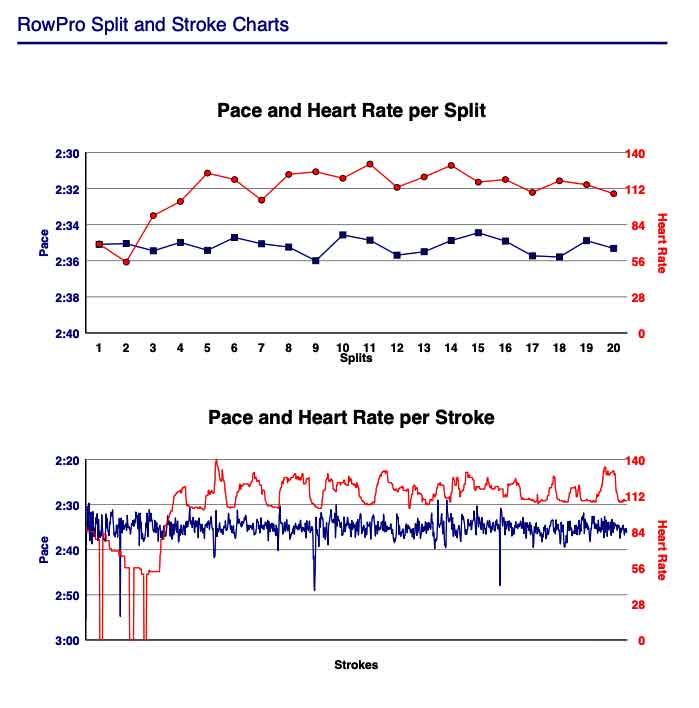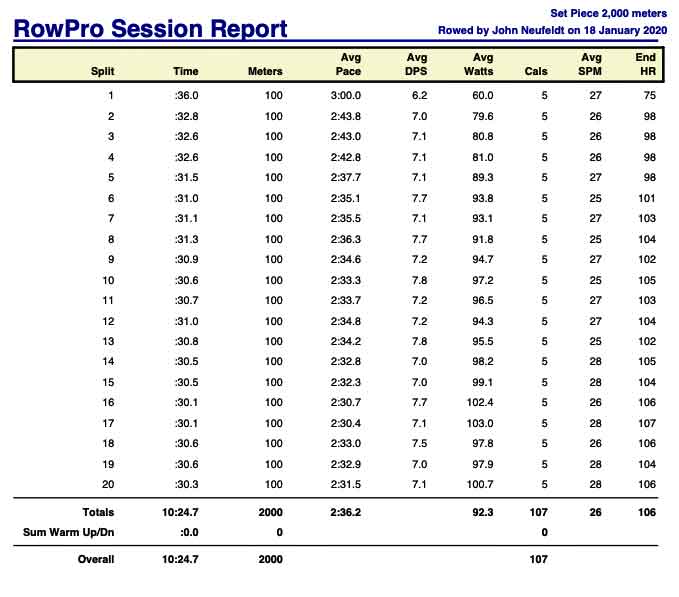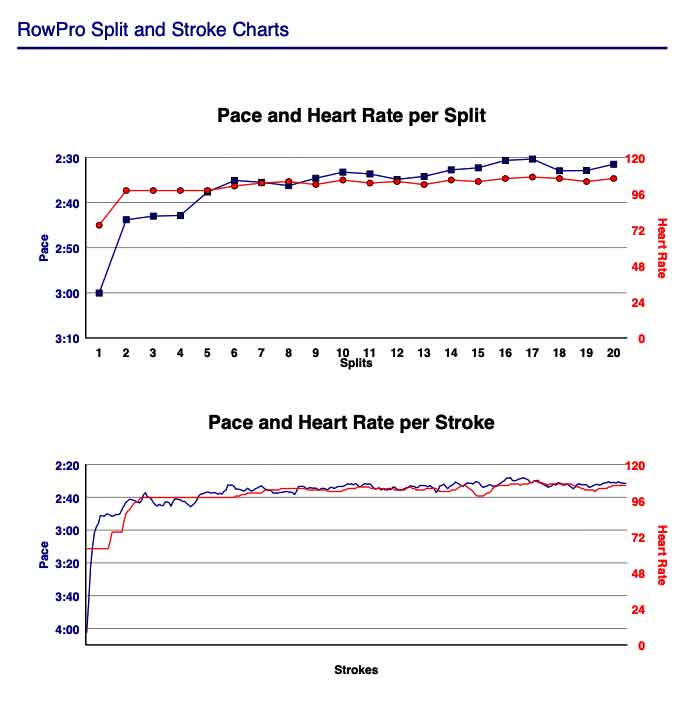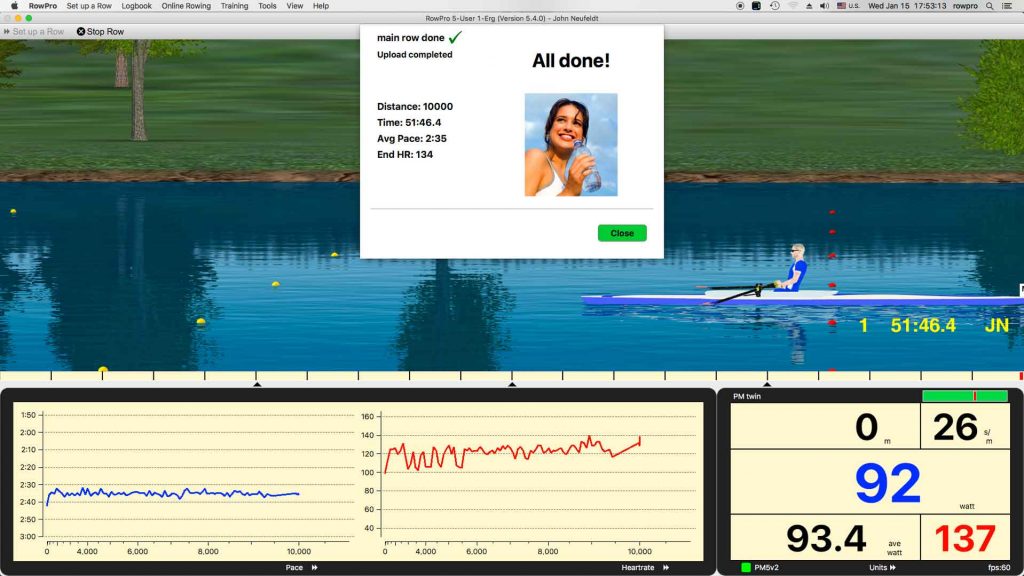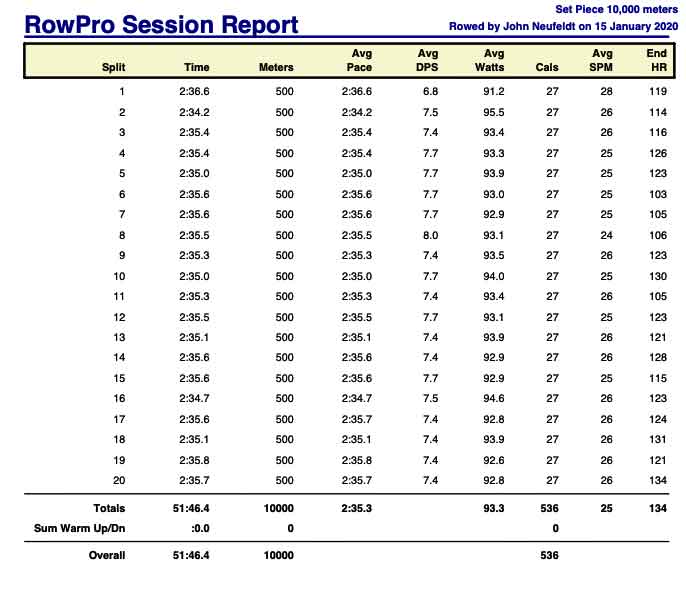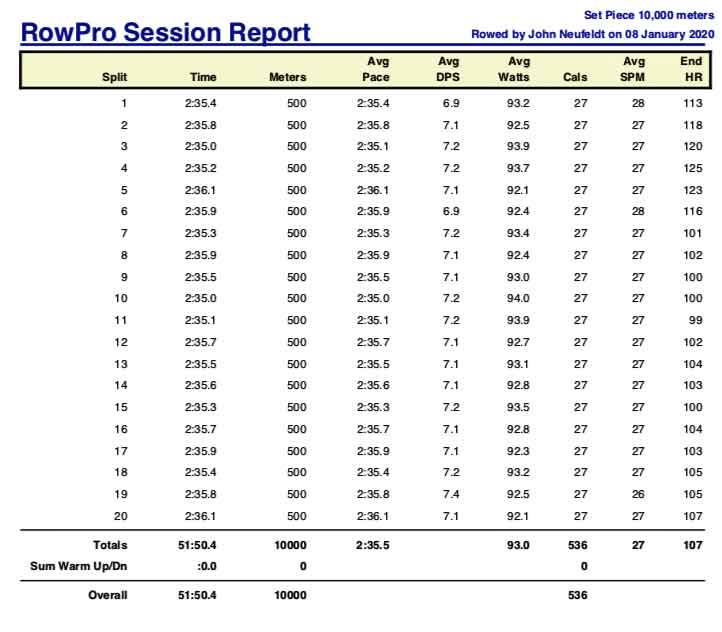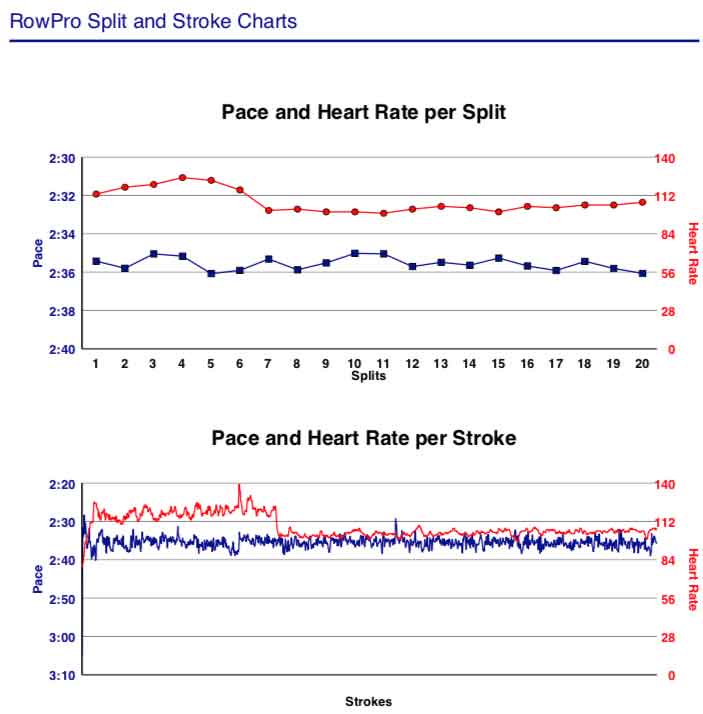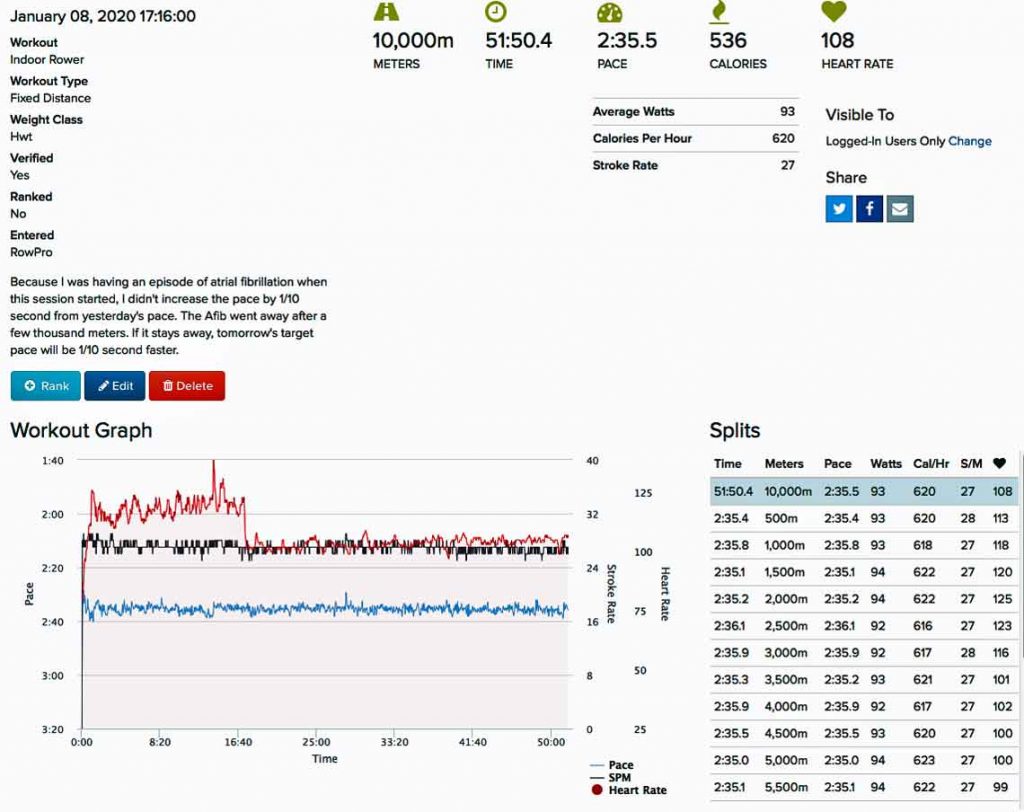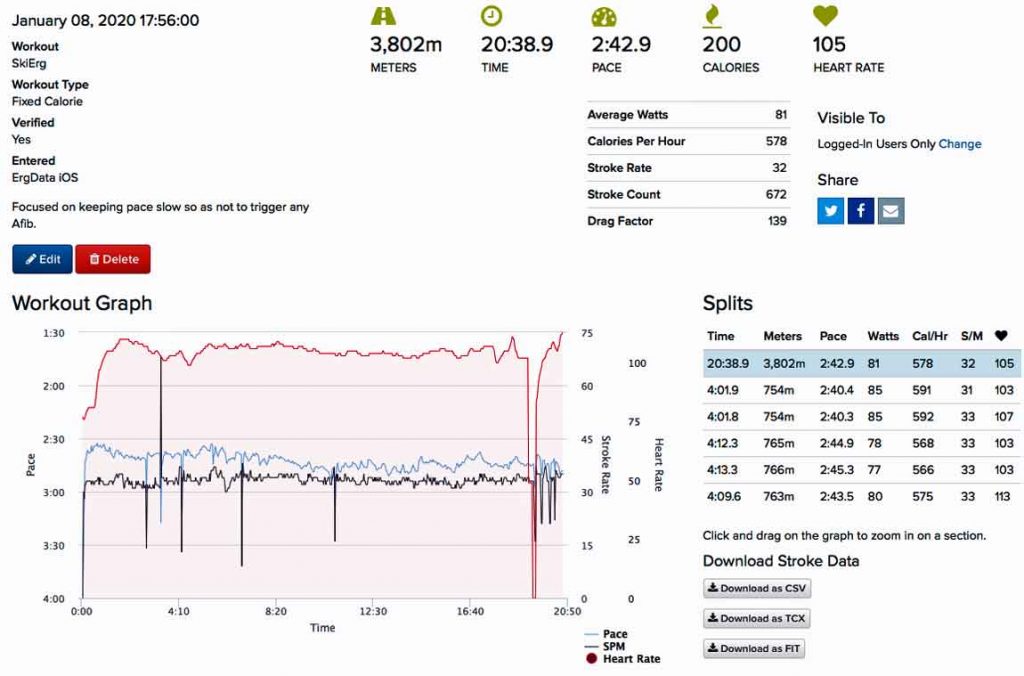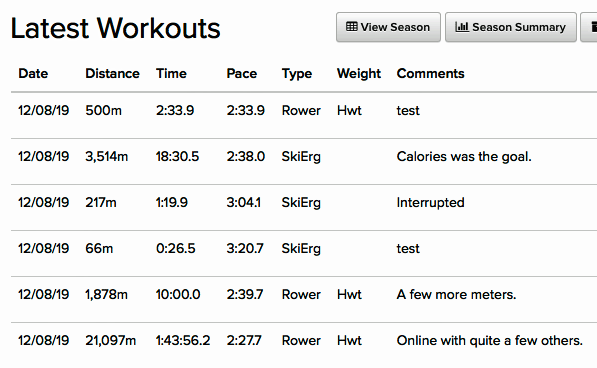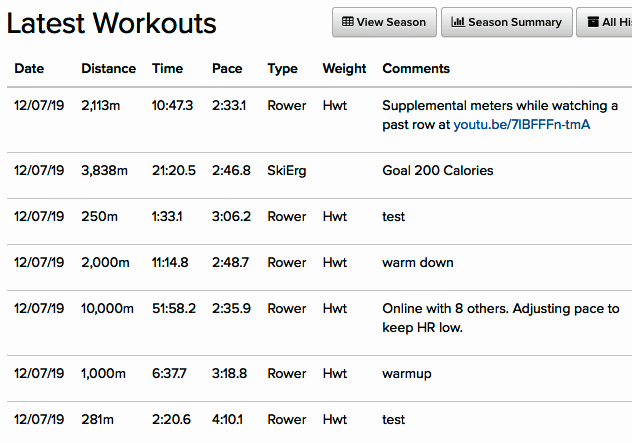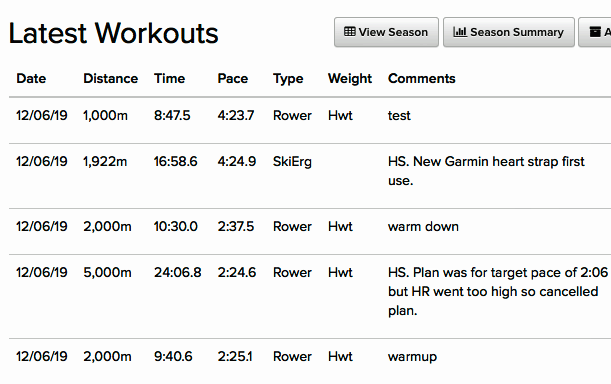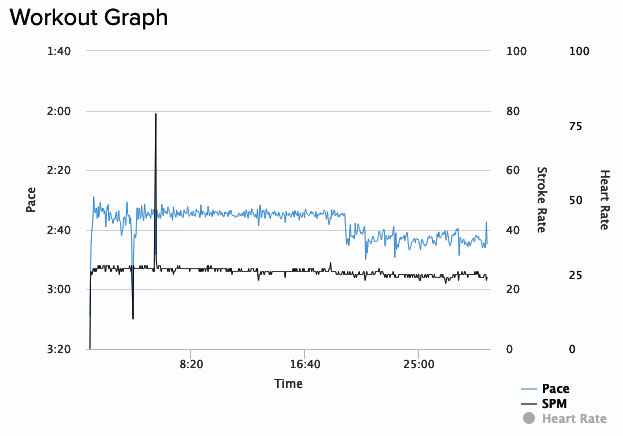
Today’s workouts were divided into morning and afternoon sessions. The morning session was online with six other guys, at 09:00 local time. The online session was a 30 minute “handicap chase”. It was structured so that the “turtle” (the slowest rower) would begin rowing immediately at the start and the other rowers would wait at the starting line for an amount of time depending on their planned rowing pace, that would allow them to catch up with the “turtle” after about 5,000 meters and then everybody would row together the remaining distance from 5,000 meters to the finish line when 30 minutes was completed.
I was planning to row the slow pace of 2:35 and start about 10 seconds after the “turtle” but he announced that he was going to row slower than his usual, so I waited about 50 seconds after the start signal before I began rowing.
At the top of this blog post you can see a graph for the 30 minute session. After 50 seconds of motionless waiting I started rowing, aiming for a pace of 2:35. When there was about 9 or 10 minutes of the 30 minutes remaining, I caught up to the “turtle” and for the remainder of the session I matched his pace and rowed alongside him. You can see on the graph how the effort level (pace, which is blue on the chart) is fairly constant at one level for about the first 2/3 of the session and then it becomes lower for the remainder of the time when I was matching the pace of the other rower.
I was wearing a heart rate transmitter chest strap, but it wasn’t displaying a reading, so I removed it with one hand while rowing with the other hand so that it wouldn’t distract me from focusing on pace.
I was also wearing a wrist watch to log the workout to the daily “Activity App” and the wrist watch had its own heart rate monitor which was displaying heart rate. I glanced at it several times during the session and saw that heart rate immediately climbed too high at the beginning, went even higher and then settled down to a normal rate.
I chose not to do any warm-up at all before the session began, because my planned pace of 2:35 was as slow or slower than the pace I’ve used many times for warming up.
But without atrial fibrillation happening (thank God!) my resting heart rate was almost normal at around 50 BPM. (normal resting heart rate for me is in the 40’s). I’ve read that the lower the resting heart rate, the greater the chance that some of the heart’s “rogue” timing cells will prematurely fire. I’ve also read that the hearts of competitive rowers are less “adaptable” than hearts of runners or swimmers, so perhaps the heart was being finicky / persnickety and needed either a more gradual start or an ultra-slow warmup (?) Or maybe the heart just wanted to start out full-blast at maximum effort, like a rower would do in a short distance race (?)
Here is a screen shot of the heart rate graph from the watch, so you can see how heart rate behaved during the 30 minute session:

For the afternoon workout session, I did an ultra-slow warmup on the SkiErg, of 50 Calories at a pace of about 3:00/500m. The heart didn’t seem to complain about that.
Following the SkiErg warmup, the main and final workout of the day was 10,000 meters on the rowing machine at a steady average pace of 2:35.0/500m. The heart rate and rhythm were both well-behaved during the 10K.
For anyone who would like to row-along or race against that 10K, a screen recording was made & uploaded to YouTube at this link: Indoor Rowing 10K at 2 mins 35 sec per 500 meters 01202020
The screen recording is a silent. No sound track. Supply your own sound effects or preference of background music if you want to hear more than the singing of the chain of your rowing machine.
Here are screenshots relating to today’s afternoon 10,000 meter session:
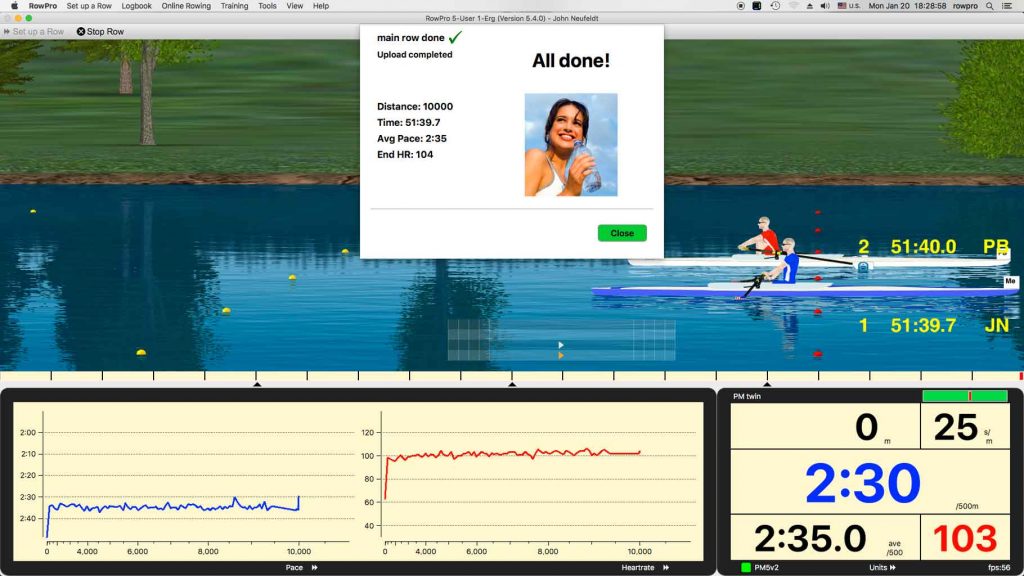

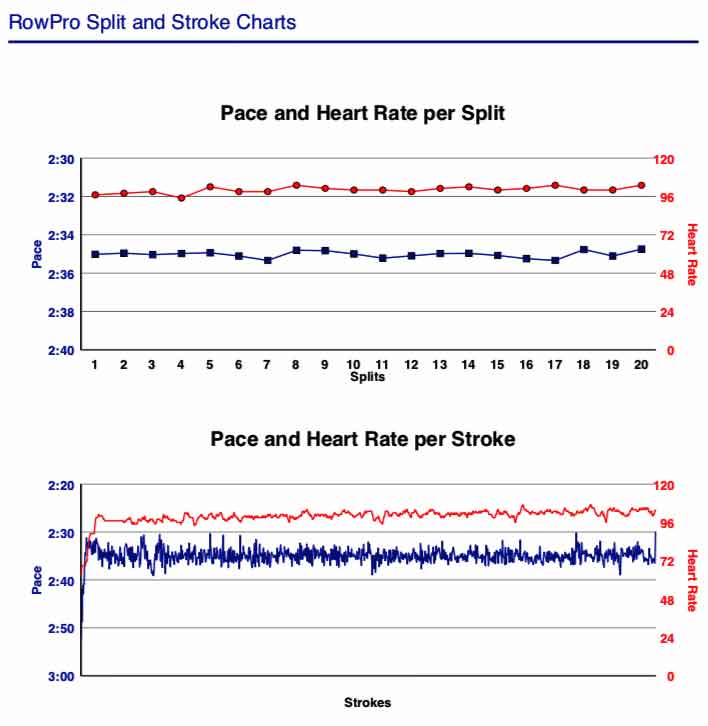
Happy rowing to you!
